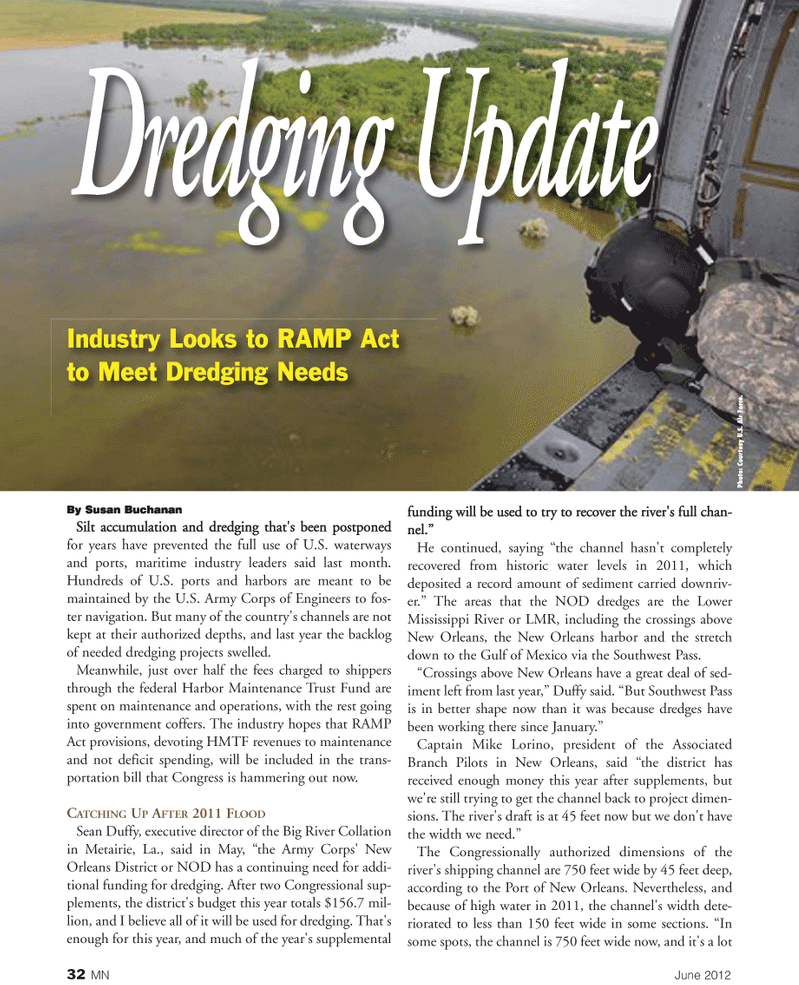
Page 32: of Marine News Magazine (June 2012)
Dredging & Marine Construction
Read this page in Pdf, Flash or Html5 edition of June 2012 Marine News Magazine
32MNJune 2012By Susan BuchananSilt accumulation and dredging that's been postponed for years have prevented the full use of U.S. waterways and ports, maritime industry leaders said last month. Hundreds of U.S. ports and harbors are meant to be maintained by the U.S. Army Corps of Engineers to fos- ter navigation. But many of the country's channels are not kept at their authorized depths, and last year the backlog of needed dredging projects swelled. Meanwhile, just over half the fees charged to shippers through the federal Harbor Maintenance Trust Fund are spent on maintenance and operations, with the rest going into government coffers. The industry hopes that RAMP Act provisions, devoting HMTF revenues to maintenance and not deficit spending, will be included in the trans-portation bill that Congress is hammering out now. CATCHING UPAFTER2011 FLOOD Sean Duffy, executive director of the Big River Collation in Metairie, La., said in May, the Army Corps' New Orleans District or NOD has a continuing need for addi- tional funding for dredging. After two Congressional sup- plements, the district's budget this year totals $156.7 mil- lion, and I believe all of it will be used for dredging. That's enough for this year, and much of the year's supplemental funding will be used to try to recover the river's full chan- nel.?He continued, saying the channel hasn't completely recovered from historic water levels in 2011, which deposited a record amount of sediment carried downriv- er.? The areas that the NOD dredges are the Lower Mississippi River or LMR, including the crossings above New Orleans, the New Orleans harbor and the stretch down to the Gulf of Mexico via the Southwest Pass. Crossings above New Orleans have a great deal of sed- iment left from last year,? Duffy said. But Southwest Pass is in better shape now than it was because dredges have been working there since January.? Captain Mike Lorino, president of the Associated Branch Pilots in New Orleans, said the district has received enough money this year after supplements, but we're still trying to get the channel back to project dimen- sions. The river's draft is at 45 feet now but we don't have the width we need.? The Congressionally authorized dimensions of the river's shipping channel are 750 feet wide by 45 feet deep, according to the Port of New Orleans. Nevertheless, and because of high water in 2011, the channel's width dete-riorated to less than 150 feet wide in some sections. In some spots, the channel is 750 feet wide now, and it's a lot Industry Looks to RAMP Actto Meet Dredging Needs Photo: Courtesy U.S. Air Force.Dredging Update

 31
31

 33
33
